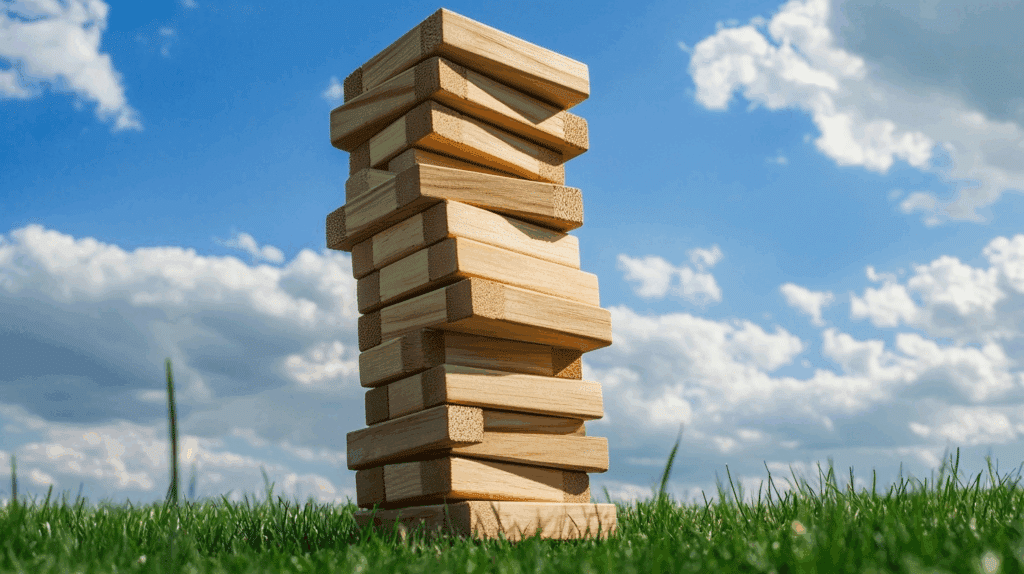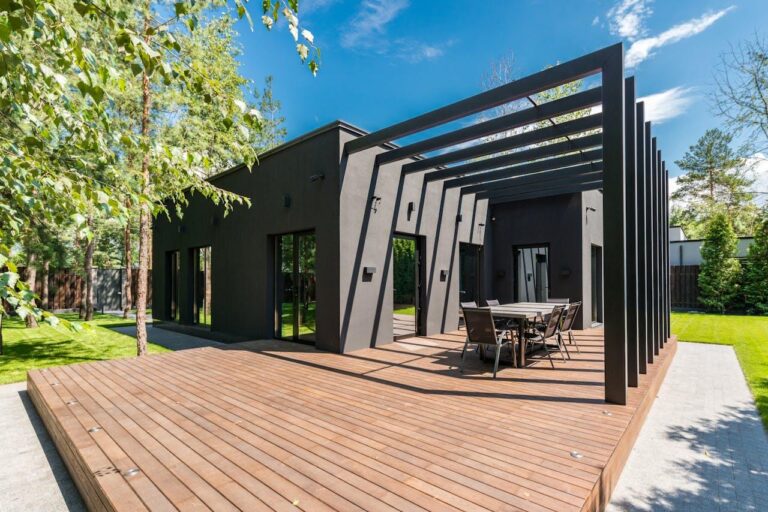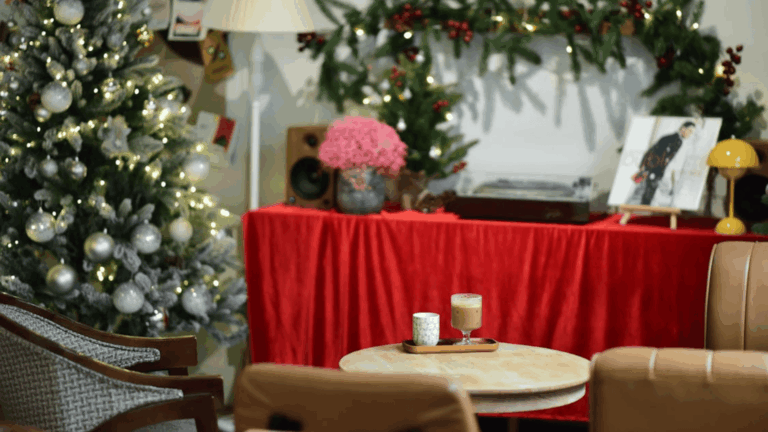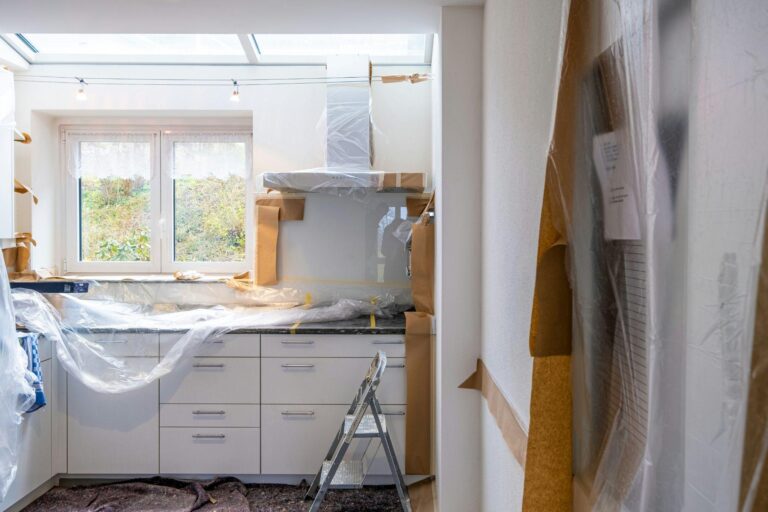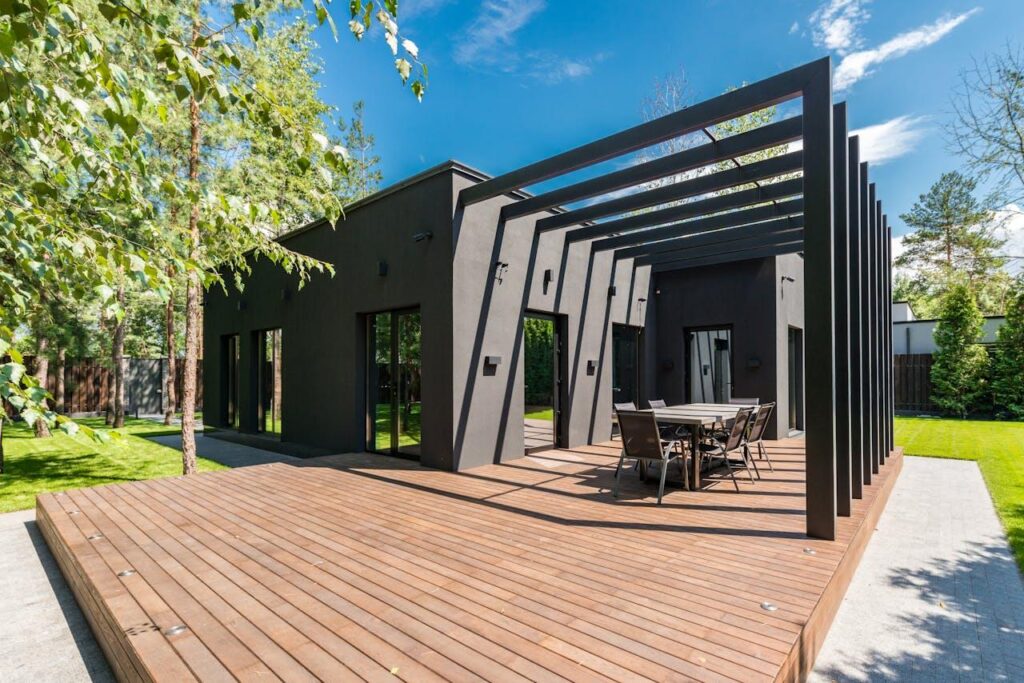Looking to add excitement to backyard gatherings? Giant Jenga converts ordinary get-togethers into memorable events, but commercial sets often come with a hefty price tag.
Creating a homemade Giant Jenga set requires surprisingly little expertise. With just a few 2x4s, basic tools, and an afternoon of free time, anyone can build a game that delivers years of entertainment.
This straightforward guide breaks the process into manageable steps suitable for beginners.
Readers will find exactly what materials to purchase, proper cutting techniques, and simple tricks that significantly improve the final product.
The Interesting Origins and Evolution of Jenga
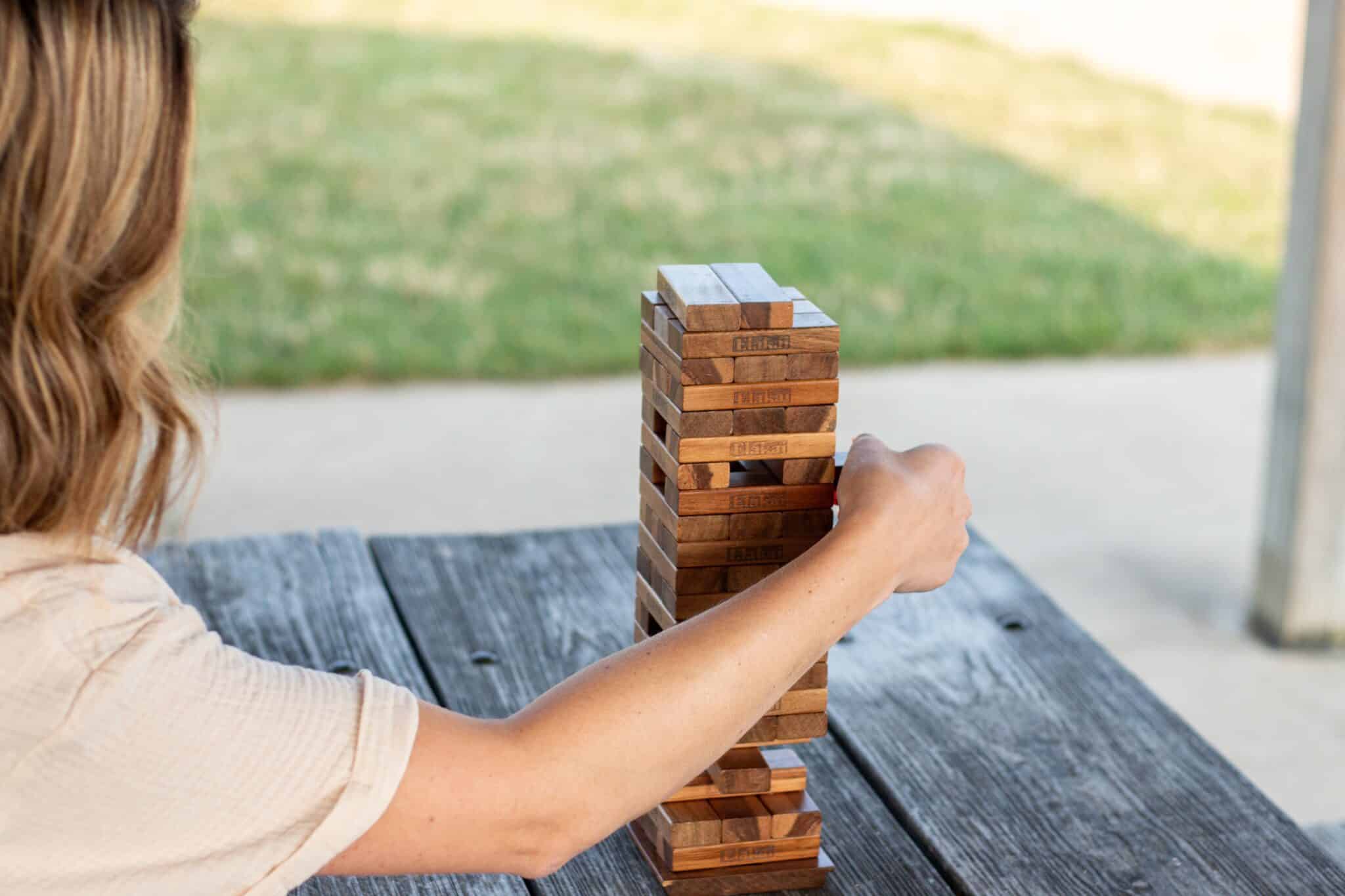
The wooden block game we know today started in the early 1970s. Leslie Scott, who grew up in Ghana, West Africa, made the first sets using wooden blocks from a local sawmill. Her family enjoyed playing this simple yet fun game during gatherings.
In 1983, Scott showed her creation at a toy fair in London. The name “Jenga” comes from a Swahili word that means “to build.” She chose this name as a nod to her African roots.
The game quickly gained fans. By 1986, Hasbro bought the rights and helped sell it worldwide. The rules stayed simple: pull out blocks one by one and stack them on top without making the tower fall.
Today, the small wooden game has grown into many forms, including the big yard version.
The basic idea remains the same, though – test your steady hands and have tons of laughs when the tower comes tumbling down.
Tools and Materials Required
The good news is that the tools needed for how to make giant Jenga are few, and the materials are simple to find at any local hardware store.
Let’s look at what you’ll need to gather before you begin cutting and sanding your wooden blocks.
| Item | Purpose |
|---|---|
| 2×4 lumber (8 feet) | Main material for blocks |
| Measuring tape | Accurate measurement of blocks |
| Pencil | Marking cut lines |
| Circular saw or miter saw | Cutting the wood |
| Orbital sander | Smoothing surfaces |
| 80-grit sandpaper | Sanding blocks efficiently |
| Finishing wax | Final smooth and protective coating |
| Optional: Wood stain or paint | For adding color |
| Clean rags | Applying wax and wiping excess |
| Protective gloves | Safety during sanding/finishing |
| Eye protection | Safety while cutting/sanding |
Easy Steps to Create Your Own Giant Jenga Game
The process involves measuring, cutting, sanding, and finishing your wooden blocks to create a smooth and safe game for outdoor fun.
Let’s break down each step.
Step 1. Measure and Cut the Blocks
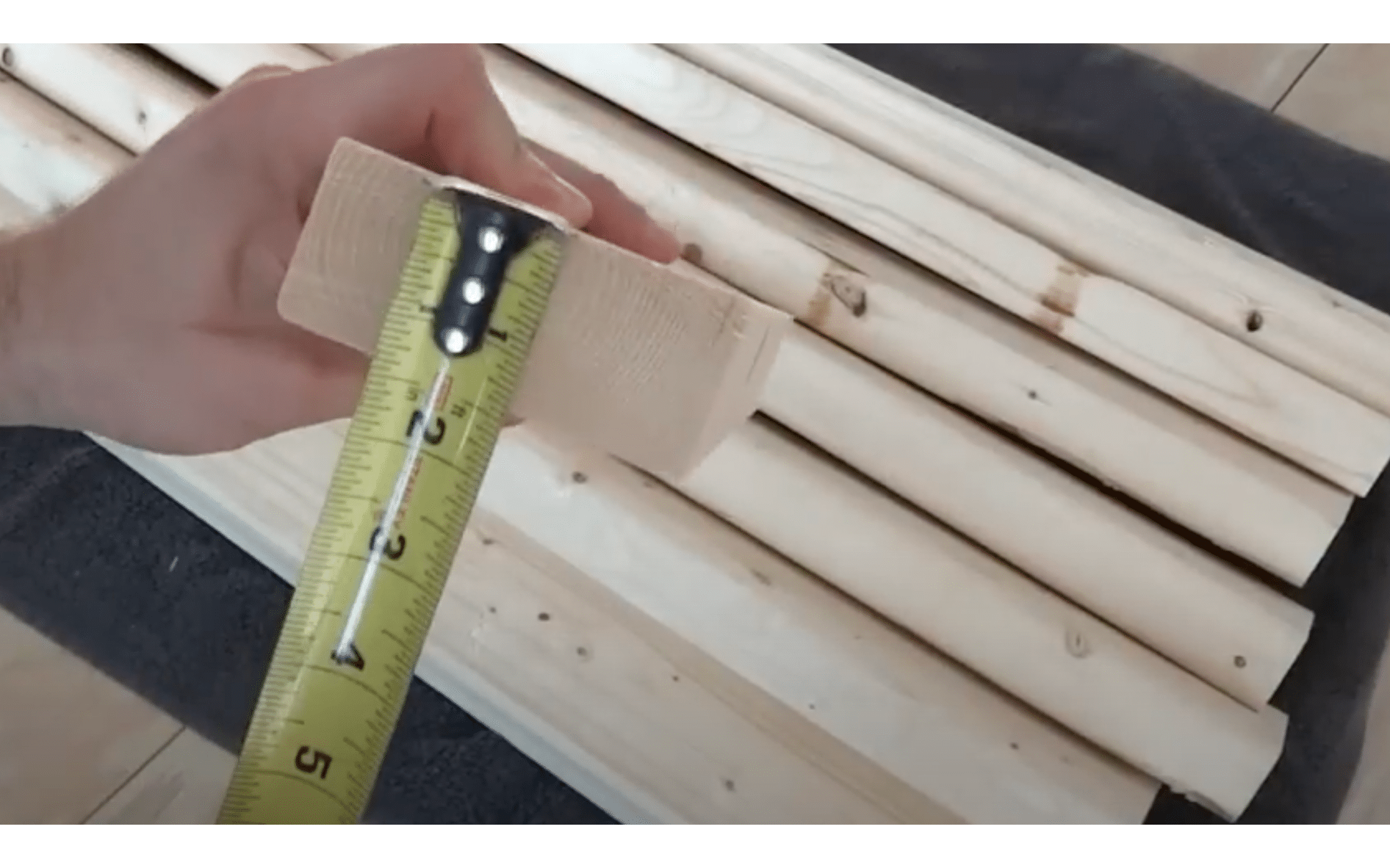
Start by selecting six to seven straight 8-foot 2×4 boards. Look for pieces with minimal knots or cracks. Measure each board and mark every 10.5 inches.
This measurement ensures your blocks stack neatly in rows of three. You should get about 9 blocks per board, resulting in 54–63 blocks total, depending on whether you want to add extras.
Tip: Use the first block as a guide to mark the rest quickly.
Step 2. Sand Each Piece Thoroughly
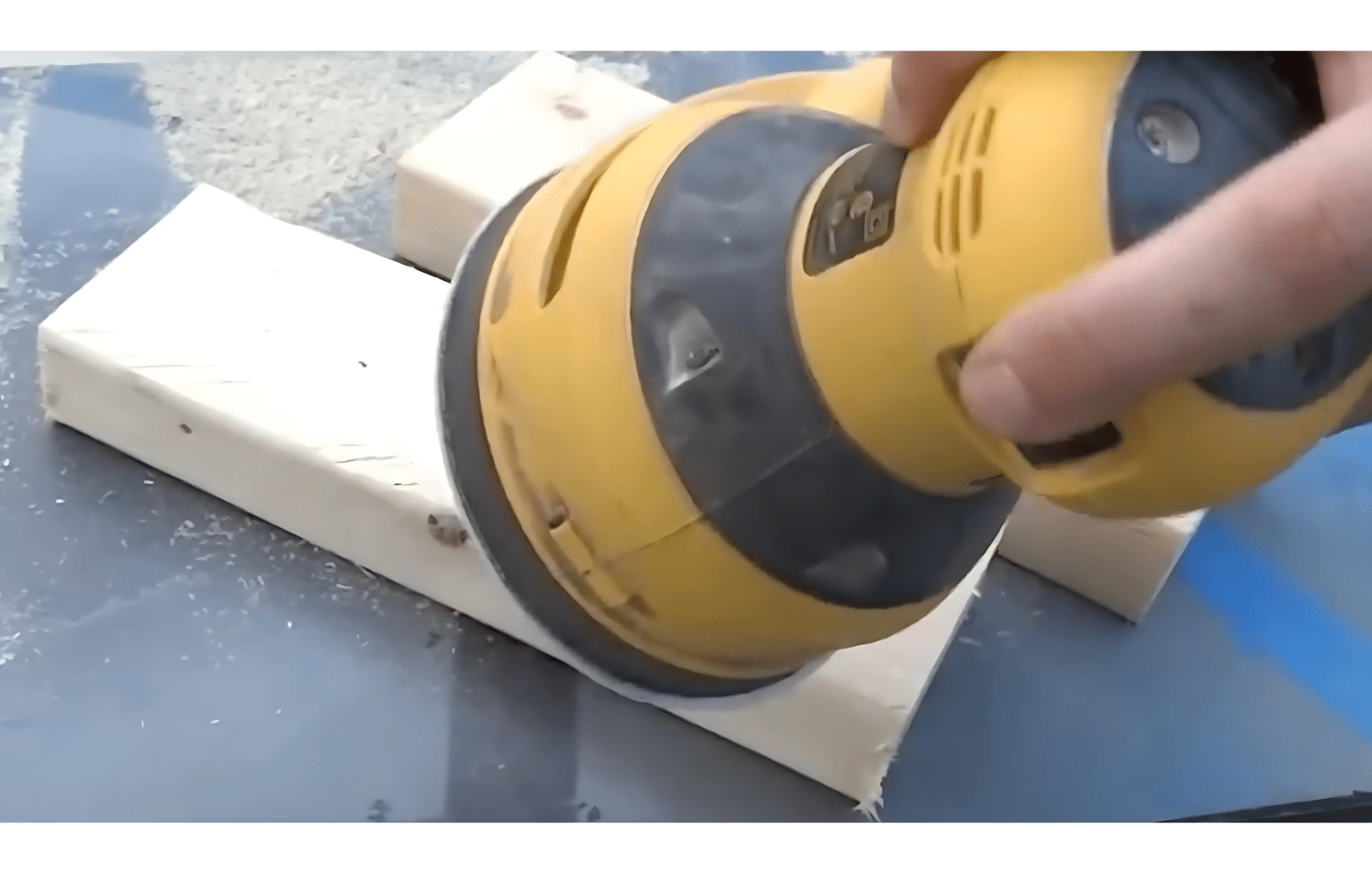
Once all the pieces are cut, prepare for sanding. Begin with 80-grit sandpaper using an orbital sander to smooth all sides and edges.
This helps prevent splinters and allows the blocks to slide easily during the game. Be sure to round off the corners slightly for better handling.
Note: 80-grit is a sweet spot, aggressive enough to remove roughness, but smooth enough for a clean finish.
Step 3. Apply Optional Color or Stain
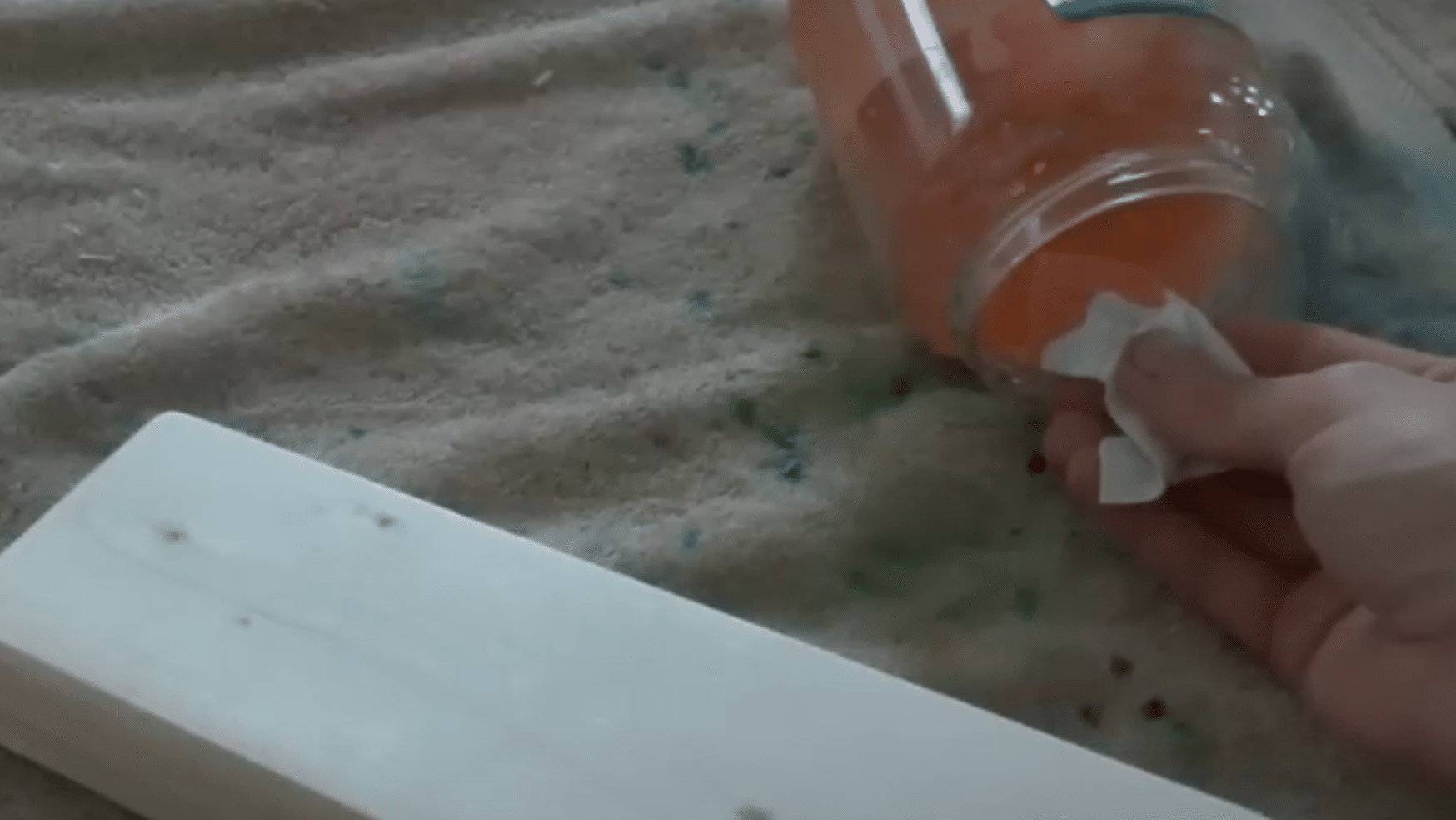
If you want to give your blocks a splash of color or a natural tone, this is the moment. Use wood stain, paint, or a diluted color wash.
Apply evenly using a brush or rag, making sure each piece is covered completely. Let them dry thoroughly before moving to the next step.
Step 4. Finish with a Protective Wax Coat
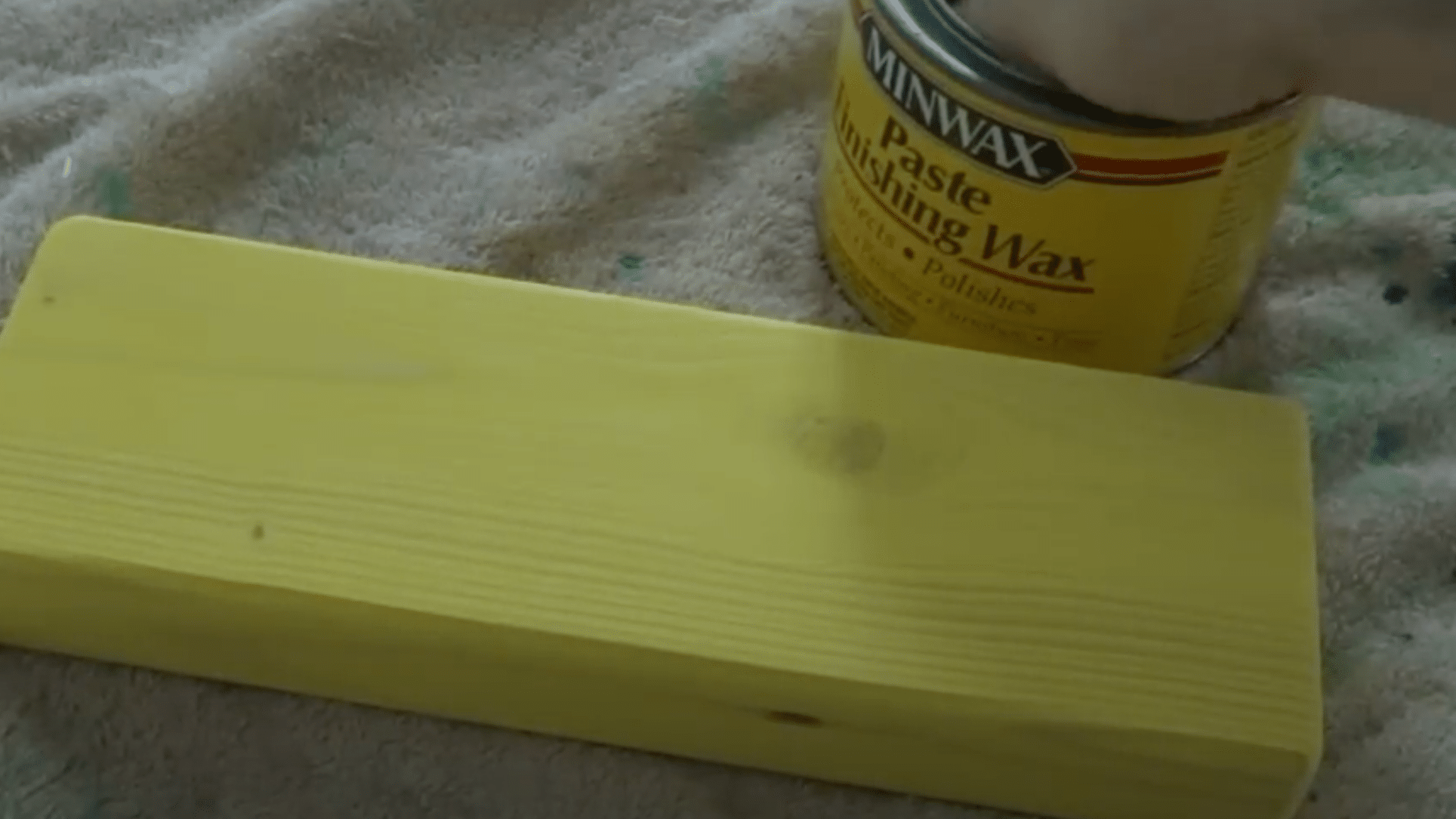
After your blocks are dry and smooth, apply paste finishing wax with a soft rag. This protective layer soaks into the wood and gives a slick finish that helps the blocks slide with ease.
After 20–30 minutes, buff each piece gently until you achieve a light sheen.
Step 5. Store Safely and Choose Your Play Area Wisely
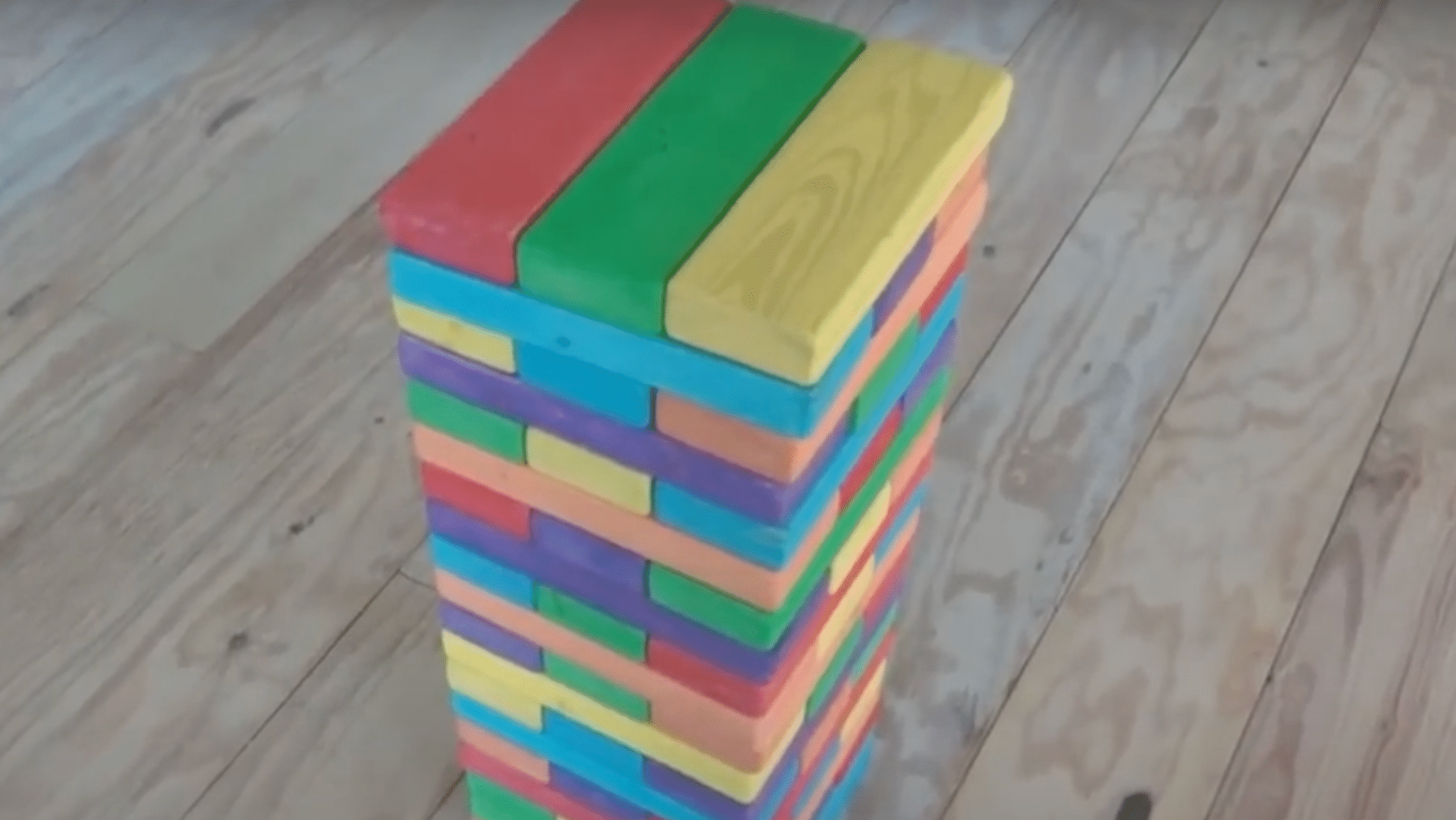
Now that your set is complete, stack the blocks carefully to create your game tower. Since the full stack can become heavy (up to 30 inches tall and over), it’s best to play on a soft surface like grass or a rug.
Avoid hard flooring to reduce noise or damage. Also, keep small children at a safe distance during play to prevent injuries if the tower falls.
For a more detailed explanation on how to make giant jenga at home, check the YouTube link below:
How to Play: Master the Rules and Spice Up Your Jenga Game
Basic Rules
- Build the tower by stacking three blocks side by side, with each layer at right angles.
- Take turns removing one block from below the top row using only one hand.
- Place each removed block on top of the tower.
- Lose if you make the tower fall.
Winning Tips
Before removing a block, gently test it to ensure it’s stable. Look for any loose blocks that might come out easily.
Move slowly and steadily as you pull out a block to maintain control. Walking around the tower to view all sides will give you a better perspective and help you make a more informed decision on which block to remove.
Fun Twists
- Challenge Jenga: Write tasks on blocks.
- Truth or Dare: Mark blocks with T or D.
- Timed Turns: Use a 60-second timer.
- Tournament Play: Create brackets for large groups.
These simple additions convert basic Jenga into an exciting game that keeps everyone engaged and laughing!
Choosing the Best Wood for Giant Jenga Blocks
Finding the right lumber is a key first step when learning how to make giant Jenga. The wood you pick affects how long your game lasts and how well it plays.
Here’s a look at some common options for your outdoor block tower game.
| Wood Type | Pros | Cons | Cost Range |
|---|---|---|---|
| Pine | Low cost, lightweight, Easy to cut and sand | Dents easily, not as durable outdoors, may warp over time | $15-25 per set |
| Cedar | Good outdoor durability, Natural bug protection, Nice smell | Higher cost, can splinter, Softer than some woods | $30-45 per set |
| Douglas Fir | Strong and solid, Good weight for play, less prone to warping | Knots can be hard to work with, Medium cost, needs sealing for outdoor use | $25-35 per set |
| Oak | Very tough and long-lasting, Great feel during play, looks nice | Costly, Heavy to move around, Harder to cut and work with | $50-70 per set |
Most home builders choose pine or Douglas fir due to the good mix of cost and quality. For a first-time project, Pine offers the best value while still making a fun game.
Outdoor vs. Indoor Giant Jenga: What to Consider
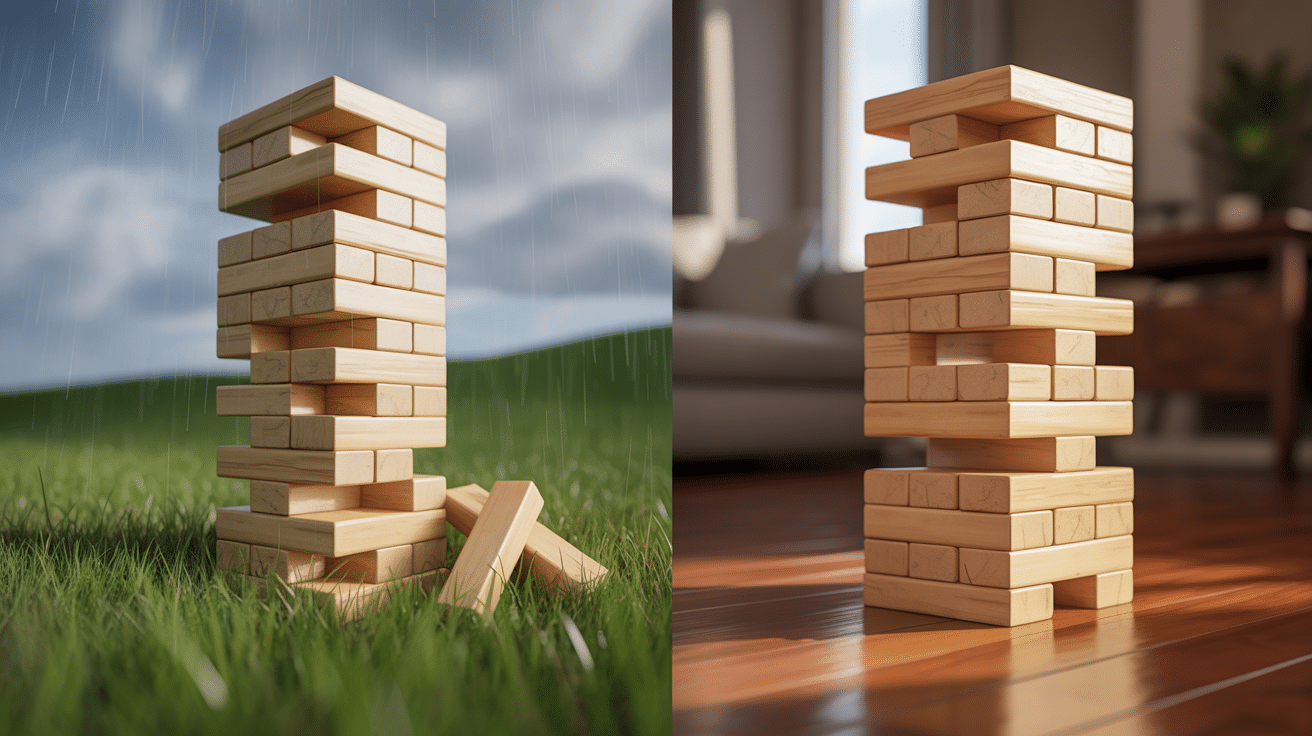
When you learn how to make giant Jenga, you need to think about where you’ll play it most often. The play location impacts what wood to use and how to finish your blocks. Indoor and outdoor use have different needs.
For indoor play:
- Wood types like pine work fine without extra treatment
- No need for weather-proof seals or coatings
- Lighter woods are better for floor safety
- A smoother finish helps blocks slide without damaging surfaces
For outdoor play:
- Weather-resistant woods like cedar last longer
- Apply a water-resistant seal to prevent warping
- A slightly rougher finish helps with humidity and wet hands
- Brightly colored stain makes blocks easier to find in the grass
Finishing It Up
Now you have all the steps to build your own backyard block tower game.
Why does this matter? A homemade giant Jenga set gives you hours of fun with family and friends without spending much money. It tests both your steady hands and quick thinking.
What next? Once your blocks are finished, store them in a dry place when not in use.


